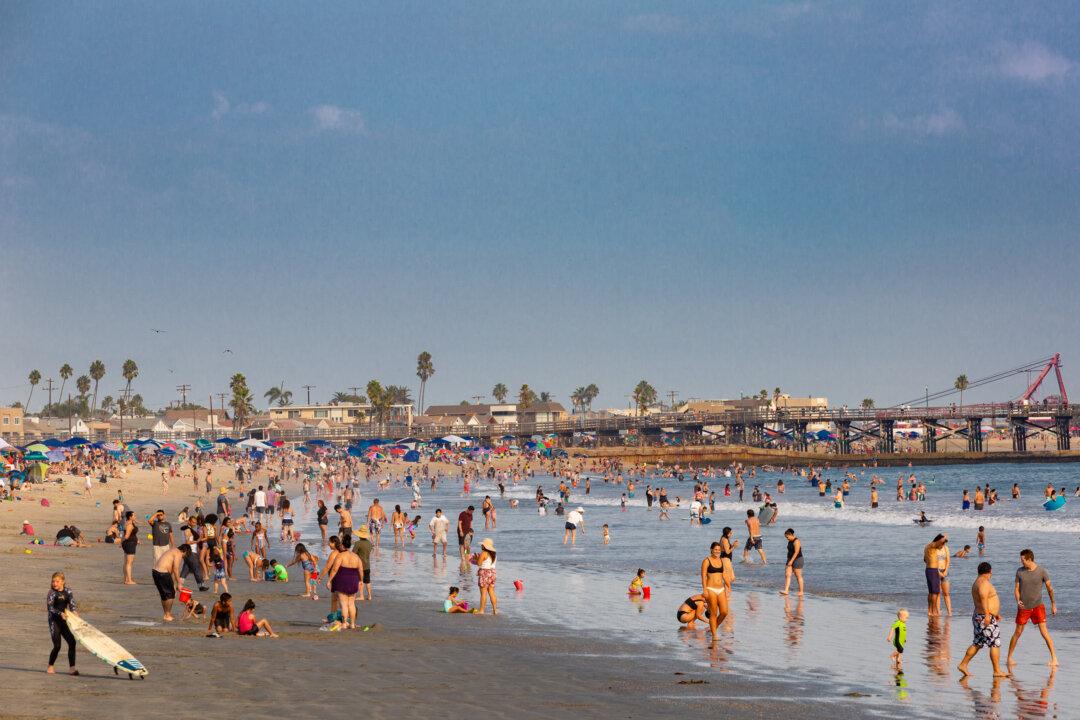Southern California beaches are seeing more juvenile great white sharks sometimes within feet of unknowing surfers and swimmers, according to researchers at the California State University–Long Beach Shark Lab.
Such have been lingering along the region’s shores, especially over the last decade, as water temperatures have warmed, according to Chris Lowe, who heads the lab.





